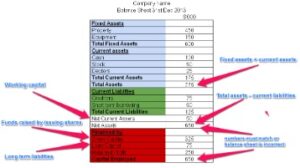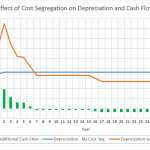
If you’re ready to streamline your reconciliation process and gain a deeper understanding of how to reconcile in QuickBooks, read on to become a reconciliation pro. Once you have your monthly bank statements, you can reconcile your accounts. You’ll compare each transaction in QuickBooks with what’s recorded on your bank statement.

Step 4: Reviewing Transactions
- If you added older transactions to QuickBooks that are dated before your opening balance, it may impact the account’s total.
- Adjusting transactions in QuickBooks is necessary to rectify any disparities identified during the comparison with the bank statement, ensuring the accurate synchronization of financial records.
- It’s important to perform a bank reconciliation periodically to identify fraudulent activities or bookkeeping and accounting errors.
- Just like balancing your checkbook, you need to regularly review your accounts in QuickBooks.
Since all of your transaction info comes directly from your bank, reconciling should be a breeze. With its ability to integrate seamlessly into QuickBooks, reconciliation streamlines the financial management process, ensuring compliance and transparency. If you forgot to enter an opening balance and you’re already tracking transactions in the account, here’s how to enter an opening balance later on. Frequent reconciliation is important to ensure your QuickBooks accounts remain accurate. Finally, you need to make sure all transactions are matched to already-entered transactions, or categorized and added if there is no such transaction entered already. QuickBooks will attempt to match downloaded transactions to previously-entered transactions to avoid duplication.
Account reconciliation process in QuickBooks
Remember that transactions that aren’t accounted for in your bank statement won’t be as obvious as bank-only transactions. This is where your accounting software can help you reconcile and keep track of outstanding checks and deposits. Most reconciliation modules allow you to check off outstanding checks and deposits listed on the bank statement. You should perform monthly bank reconciliations so you can better manage your cash flow and understand your true cash position. Read on to learn about bank reconciliations, use cases, and common errors to look for. If you’re reconciling an account for the first time, review the opening balance.
Next steps: Review past reconciliations
If your beginning balance in your accounting software isn’t correct, the bank account won’t reconcile. This can happen if you’re reconciling an account for the first time or if it wasn’t properly reconciled last month. You may need to go back to previous months to locate the issue. Just like balancing your checkbook, you need to review your accounts in QuickBooks to make sure they match your real-life bank and credit card statements. Marking a transaction as reconciled in QuickBooks Online signifies the validation and alignment of that specific transaction with the bank statement, ensuring the accuracy of bookkeeper duties financial records.
When you’re done reviewing your statement, you’ll know everything made it into QuickBooks. It streamlines the reconciliation process, allowing for the identification and resolution of discrepancies more effectively. To enter the ending balance, you should first navigate to the ‘Reconcile’ page and select the appropriate account. Once you’re done, you should see a difference of $0, which means your books are balanced. Sometimes things get missed – it’s bound to can you work 60 hours & not get paid overtime happen every once in a while. Follow the section based on what type of account you’re reconciling.
Beginning cash balances
If you need to make changes after you reconcile, start by reviewing a previous reconciliation report. If you reconciled a transaction by accident, here’s how to unreconcile individual transactions. To carry out a reconciliation, you will need to have your monthly bank or credit card statements on hand. This is a simple data entry error that occurs when two digits are accidentally reversed (transposed) when posting a transaction.
Marking transactions as cleared in QuickBooks Desktop enhances the overall accuracy and reliability of financial reconciliations. This process is crucial for verifying the completeness and accuracy of financial transactions, and it plays a vital role in maintaining the integrity of the company’s financial records and reporting. The information on your bank statement is the bank’s record of all transactions impacting the company’s bank account during the past month. Compare the ending balance of your accounting records to your bank statement to see if both cash balances match. It begins with accessing the reconcile window by navigating to the Banking menu and selecting Reconcile.
The significance of this phase lies in its ability to identify any discrepancies or errors, providing a clear overview of the company’s financial status. In the world of business, financial accuracy is the compass that guides decision-making. QuickBooks, with its intuitive account reconciliation feature, ensures that your financial data remains trustworthy. By diligently following the steps outlined in this guide, you’re not just reconciling accounts — you’re reconciling your financial aspirations with your financial reality. In doing so, you pave the way for a thriving and sustainable future for your business. This process is crucial for ensuring the financial how do you calculate portfolio beta integrity of a business.

